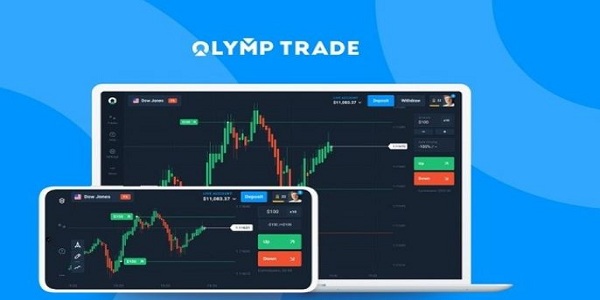Gig Economy Trends for 2024 | The gig economy is continuously evolving, driven by technological advancements, changing worker preferences, and shifting economic landscapes. These trends reflect shifts in technology, economic conditions, and societal attitudes toward work. This article explores the most significant gig economy trends of 2024 and their implications for workers and businesses. Read through
10 Gig Economy Trends for 2024
The gig economy has been a transformative force in the global labor market, reshaping how people work and how companies operate. As we move through 2024, several trends are emerging that will further influence this dynamic sector.
The gig economy is continuously evolving, driven by technological advancements, changing worker preferences, and shifting economic landscapes. In 2024, trends such as the increased adoption of AI and automation, expansion into new industries, and a greater focus on worker protections and benefits are shaping the future of gig work.
Increased Adoption of AI and Automation
Overview: Artificial intelligence (AI) and automation are becoming integral to the gig economy, enhancing efficiency and expanding opportunities for both workers and employers.
Impact on Workers: AI-driven platforms are improving the matching process between gig workers and tasks, ensuring that workers find jobs that closely align with their skills and preferences. Automation is also reducing administrative burdens, such as scheduling and payment processing, allowing gig workers to focus more on their core tasks.
Impact on Employers: For businesses, AI and automation offer enhanced capabilities to manage gig workers, from vetting candidates to monitoring performance. This leads to better project outcomes and optimized labor costs.
Examples: Companies like TaskRabbit and Upwork are leveraging AI to match freelancers with appropriate projects. Meanwhile, ride-sharing apps like Uber are using AI to optimize routes and improve customer service.
Expansion of Gig Work into New Industries
Overview: Traditionally dominated by sectors like transportation and freelance digital services, the gig economy is now expanding into new industries such as healthcare, education, and law.
Impact on Workers: This expansion provides gig workers with more diverse job opportunities and the ability to apply specialized skills in new contexts. For instance, healthcare professionals can now find gig opportunities in telemedicine, and educators can offer tutoring services online.
Impact on Employers: Businesses in these new sectors can benefit from a flexible workforce that can be scaled up or down based on demand. This is particularly beneficial in industries with fluctuating needs, such as seasonal peaks in education or sudden surges in healthcare requirements.
Examples: Platforms like Medely connect healthcare professionals with short-term job opportunities, while companies like VIPKid offer flexible teaching gigs to educators.
Growing Demand for Flexible Work Arrangements
Overview: The desire for flexible work schedules continues to drive the gig economy. Workers are increasingly seeking jobs that allow them to balance personal commitments with professional responsibilities.
Impact on Workers: Flexible gig work enables individuals to pursue multiple income streams, tailor their schedules to personal needs, and achieve a better work-life balance. This trend is particularly appealing to millennials and Gen Z, who prioritize flexibility and autonomy in their careers.
Impact on Employers: Companies that offer flexible work arrangements can attract a broader pool of talent, including highly skilled workers who might not be available for traditional full-time roles. This flexibility can also lead to increased worker satisfaction and retention.
Examples: Platforms like FlexJobs and WeWork Remotely are gaining popularity by offering remote and flexible job opportunities across various industries.
Enhanced Worker Protections and Benefits
Overview: As the gig economy matures, there is a growing emphasis on improving worker protections and benefits. This trend is driven by both regulatory changes and the recognition of the need for a more sustainable gig workforce.
Impact on Workers: Gig workers are increasingly gaining access to benefits traditionally associated with full-time employment, such as health insurance, retirement plans, and paid time off. This shift helps reduce the financial insecurity that many gig workers face.
Impact on Employers: Companies that offer enhanced benefits can attract and retain higher-quality gig workers. While this may increase short-term costs, the long-term benefits include a more stable and committed workforce.
Examples: Companies like Uber and Lyft have started to offer benefits to their drivers, such as health insurance subsidies and access to retirement savings plans. Additionally, new platforms like Catch provide gig workers with benefits management services.
Rise of Specialized Gig Platforms
Overview: As the gig economy evolves, specialized platforms catering to niche markets are becoming more prevalent. These platforms focus on specific industries or skill sets, providing tailored services to both workers and employers.
Impact on Workers: Specialized platforms allow gig workers to find jobs that closely match their expertise, leading to higher job satisfaction and better income opportunities. These platforms also often provide industry-specific resources and training.
Impact on Employers: Businesses benefit from accessing a pool of workers with highly specialized skills, improving the quality of work and project outcomes. This specialization can also streamline the hiring process and reduce the time spent on training.
Examples: Platforms like Toptal focus on connecting companies with elite freelance software developers and designers, while companies like Gigster specialize in assembling freelance tech teams for complex projects.
Integration of Blockchain Technology
Overview: Blockchain technology is being integrated into gig platforms to enhance transparency, security, and trust between gig workers and employers. This technology provides immutable records of transactions and agreements.
Impact on Workers: Blockchain can ensure timely and secure payments, reducing the risk of fraud and non-payment. It also enables the creation of digital identities and reputations that can be verified across platforms.
Impact on Employers: Employers benefit from transparent and secure transactions, reducing administrative overhead and building trust with gig workers. Smart contracts can automate payments and enforce agreements, enhancing efficiency.
Examples: Platforms like LaborX and Opolis are using blockchain to facilitate secure transactions and create verifiable worker profiles, improving trust and accountability in the gig economy.
Increased Focus on Sustainability and Social Responsibility
Overview: Sustainability and social responsibility are becoming more important in the gig economy. Platforms and workers alike are prioritizing environmentally friendly practices and ethical business models.
Impact on Workers: Gig workers are seeking opportunities with companies that align with their values. This includes work that supports environmental sustainability, fair trade, and ethical labor practices.
Impact on Employers: Companies that emphasize sustainability and social responsibility can attract a more dedicated and ethically-minded workforce. This focus can also enhance brand reputation and customer loyalty.
Examples: Platforms like UpWork and Freelancer are promoting green projects and ethical business practices, while new startups like GoodGigs connect workers with socially responsible companies.
Growing Role of Digital Nomadism
Overview: The rise of digital nomadism continues to influence the gig economy, with more workers taking advantage of remote work opportunities to live and work from anywhere in the world.
Impact on Workers: Digital nomadism offers gig workers the freedom to travel while maintaining their income streams. This lifestyle appeals to those seeking adventure and flexibility, and it can lead to increased job satisfaction and creativity.
Impact on Employers: Businesses can tap into a global talent pool, benefiting from diverse perspectives and skills. However, managing a remote workforce requires effective communication tools and strategies.
Examples: Platforms like Remote Year and Nomad List provide resources and communities for digital nomads, while job boards like Remote.co and Working Nomads list remote gig opportunities.
Evolving Gig Worker Training and Development
Overview: As the gig economy grows, so does the need for ongoing training and professional development. Platforms are increasingly offering resources to help gig workers enhance their skills and advance their careers.
Impact on Workers: Access to training and development opportunities helps gig workers stay competitive and increase their earning potential. This support can also lead to greater job satisfaction and career growth.
Impact on Employers: Companies benefit from a more skilled and knowledgeable workforce, leading to higher quality work and better project outcomes. Offering training can also be a key differentiator in attracting top talent.
Examples: Platforms like LinkedIn Learning and Coursera are partnering with gig economy platforms to offer courses and certifications to freelancers, enhancing their skills and marketability.
Hybrid Work Models
Overview: Hybrid work models that combine elements of gig work and traditional employment are gaining popularity. These models offer the flexibility of gig work with some of the stability and benefits of traditional jobs.
Impact on Workers: Hybrid models provide gig workers with more stable income and access to benefits while maintaining flexibility. This approach can help bridge the gap between gig work and full-time employment.
Impact on Employers: Companies can create more flexible workforce arrangements, adapting to changing business needs while maintaining a stable pool of workers. This model can also improve worker retention and satisfaction.
Examples: Companies like WeWork are offering flexible office spaces that cater to gig workers and traditional employees alike, while platforms like ShiftGig provide temporary staffing solutions that blend gig work with traditional employment features.
Simple Steps to Open and Set Up a YouTube Channel: A Comprehensive Guide



